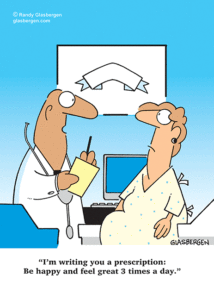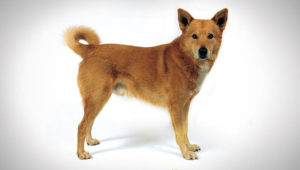.jpg) Nice research that basically says: food is medicine. In other words, eat lots of whole grains and legumes (beans) for gut health - to feed the beneficial microbes in your gut and prevent (hopefully) colon cancer. While the clinical trial studied colorectal cancer survivors and the effects of 4 weeks of adding rice bran or navy beans or placebo (nothing extra) daily to their diet - the positive effects of adding the extra dietary fiber included increased microbiome richness and diversity in the rice bran group (which is good).
Nice research that basically says: food is medicine. In other words, eat lots of whole grains and legumes (beans) for gut health - to feed the beneficial microbes in your gut and prevent (hopefully) colon cancer. While the clinical trial studied colorectal cancer survivors and the effects of 4 weeks of adding rice bran or navy beans or placebo (nothing extra) daily to their diet - the positive effects of adding the extra dietary fiber included increased microbiome richness and diversity in the rice bran group (which is good).
And when researchers treated colorectal cancer cells with stool extracts from these groups, they saw reduced cell growth from the groups that had increased rice bran and navy bean consumption. This was an important finding and stresses that adding fiber to the diet is beneficial to gut health, and perhaps may prevent colorectal cancer.
Other studies have also found a diet with lots of legumes (beans), whole grains, vegetables, fruits, nuts, and seeds to be beneficial for gut microbes and gut health. A classic study (from 2015) found dramatic changes in the colon (specifically in the colonic mucosa) from dietary changes in as little as 2 weeks. They compared the typical low-fat, high fiber diet of South Africa with an “American” high-fat, low-fiber diet, and found that after two weeks on the high fiber African diet, there was significantly less inflammation in the colon and reduced biomarkers of cancer risk. On the other hand, measurements indicating cancer risk dramatically increased after two weeks on the western diet. That study found that a major reason for the changes in cancer risk was the way in which the bacteria in the gut (the microbiome) were altered in adapting to the new diet. The researchers suggested trying for at least 50 grams of fiber per day for gut health benefits.
From Medical Xpress: Phase II trial: Rice bran adds microbiome diversity, slows growth of colon cancer cells
Today at the American Association for Cancer Research (AACR) Annual Meeting 2017, University of Colorado Cancer Center researchers at Colorado State University present results of a phase II clinical trial of 29 people exploring the effects of adding rice bran or navy beans to the diets of colorectal cancer survivors. After the 4-week randomized-controlled trial during which people added rice bran, navy bean powder or neither, both the rice bran and navy bean groups showed increased dietary fiber, iron, zinc, thiamin, niacin, vitamin B6, folate, and alpha-tocopherol. The rice bran group also showed increased microbiome richness and diversity. When researchers treated colorectal cancer cells with stool extracts from these groups, they saw reduced cell growth from the groups that had increased rice bran and navy bean consumption.
Previous work shows the ability of these diets to decrease colorectal cancer risk in animal models. The current trial confirms that people can eat enough bean- and rice bran-enhanced foods to promote gut health at levels shown to prevent colorectal cancer in animals. Guidelines from the American Institute for Cancer Research recommend reducing the risk of cancer by eating more vegetables, fruits, whole grains and legumes, such as beans. Ryan has established from these studies that eating a half-cup of beans and 30 grams of rice bran per day is enough to see changes in small molecules that can confer protection against colorectal cancer.
"The simple message is, 'Food is medicine,' and we are looking at how to simplify that and make it apply to our everyday lives," says study co-author Regina Brown, MD, assistant professor at the CU School of Medicine and oncologist for CUHealth...."The evidence is there in animals and we can now study this in people. The question is, what are we doing to achieve adequate levels of intake of these foods?" Ryan said. "It's not enough to say 'I eat them once in a while.' That's not going to work, particularly if you are at higher risk. You have to meet a dose, just like you need a dose of a certain drug, you need to reach intake levels and consume increased amounts of these foods, and that's where people, including me, are challenged. Not everyone wants to open up a can of beans and eat them every day."


 Credit: R. Glasbergen
Credit: R. Glasbergen
 Sooo.....what is going on here? Why are very early onset (5 years and younger) pediatric inflammatory bowel diseases (IBD) in children increasing so rapidly in Canada? Inflammatory bowel diseases include
Sooo.....what is going on here? Why are very early onset (5 years and younger) pediatric inflammatory bowel diseases (IBD) in children increasing so rapidly in Canada? Inflammatory bowel diseases include  This site has several
This site has several  Huh?...A
Huh?...A  Good news! Once again a study has confirmed that eating fresh fruits is associated with a lower incidence of type 2 diabetes. And even better - there is a dose related relationship - the more one eats daily, the better. So don't worry about the "sugar content" of fruit - the key is to eat fruit (as well as vegetables) to lower the risk of getting diabetes. And if you have type 2 diabetes, it will lower the incidence of death and complications from diabetes.
Good news! Once again a study has confirmed that eating fresh fruits is associated with a lower incidence of type 2 diabetes. And even better - there is a dose related relationship - the more one eats daily, the better. So don't worry about the "sugar content" of fruit - the key is to eat fruit (as well as vegetables) to lower the risk of getting diabetes. And if you have type 2 diabetes, it will lower the incidence of death and complications from diabetes. Nothing new here, but good to have it discussed again: eating foods high in
Nothing new here, but good to have it discussed again: eating foods high in  A recent study looking at high dose supplementation of vitamin D found that it did not prevent cardiovascular disease. This study came about because of earlier studies observing that there is a higher incidence of cardiovascular disease in persons with low vitamin D levels (as measured in their blood). But such results from observational studies need rigorous testing in studies where people are randomly assigned to groups, and that are "double-blind" (no one knows who is getting the vitamin D until the end of the study) to eliminate bias. And this is what was done in this study, with the result that monthly high doses of vitamin D3 for 3 years did not prevent cardiovascular disease (including stroke, heart attacks, hypertension, etc) - as seen in that there were no group differences between the vitamin D and placebo groups. Finding no effects are "
A recent study looking at high dose supplementation of vitamin D found that it did not prevent cardiovascular disease. This study came about because of earlier studies observing that there is a higher incidence of cardiovascular disease in persons with low vitamin D levels (as measured in their blood). But such results from observational studies need rigorous testing in studies where people are randomly assigned to groups, and that are "double-blind" (no one knows who is getting the vitamin D until the end of the study) to eliminate bias. And this is what was done in this study, with the result that monthly high doses of vitamin D3 for 3 years did not prevent cardiovascular disease (including stroke, heart attacks, hypertension, etc) - as seen in that there were no group differences between the vitamin D and placebo groups. Finding no effects are " More research supports that being exposed to pets during pregnancy or in the first months of life changes the gut bacteria, and in a way that is thought to be beneficial. The researchers found that infants exposed to pets prenatally or after birth (or both) had higher levels of two microbes that are associated with a lower risk of allergies and obesity. The two microbes are Ruminococcus and Oscillospira, but in case you're wondering - they are not (yet) available in probiotics
More research supports that being exposed to pets during pregnancy or in the first months of life changes the gut bacteria, and in a way that is thought to be beneficial. The researchers found that infants exposed to pets prenatally or after birth (or both) had higher levels of two microbes that are associated with a lower risk of allergies and obesity. The two microbes are Ruminococcus and Oscillospira, but in case you're wondering - they are not (yet) available in probiotics